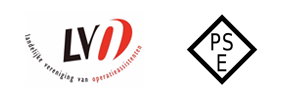MESP VS HEPA
What's HEPA?
High-efficiency particulate air (HEPA), also known as high-efficiency particulate absorbing and high-efficiency particulate arrestance. Filters meeting the HEPA standard must satisfy certain levels of efficiency. Common standards require that a HEPA air filter must remove—from the air that passes through—at least 99.95% (European Standard) or 99.97% (ASME, U.S. DOE) of particles whose diameter is equal to 0.3 μm.
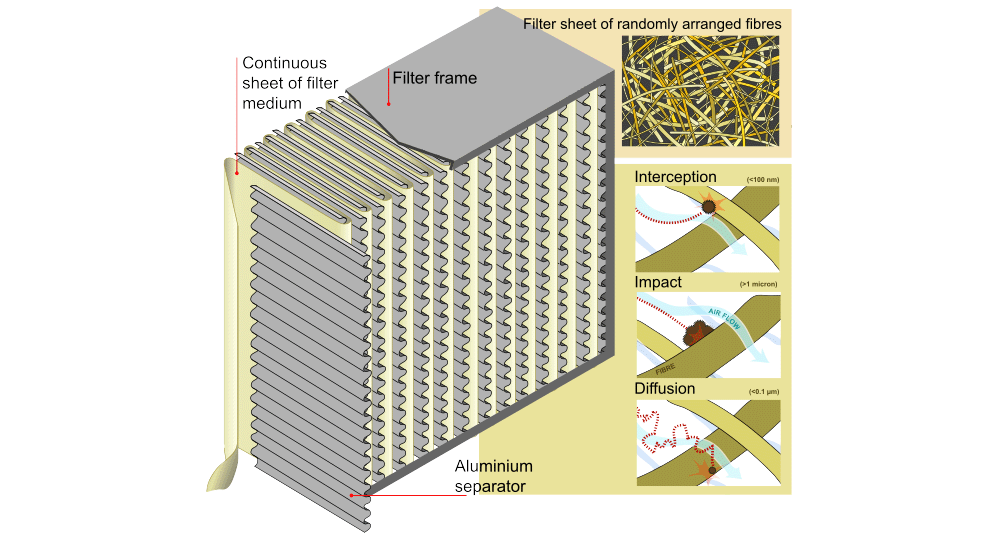
What's MESP?
MESP® stands for Micro-electrostatic Precipitator. It is highly efficient at removing airborne pollutants like particular matters, fungus, dust, pollen, soot, smoke and powerfully deactivates viruses and bacteria. In the MESP system, airborne particles in propelled air flow are electrically charged before passing into honeycomb shaped filter. The filter contains thin electrode sheets with insulation coating that generate intense electrical fields within the tubes. Charged particles are pulled to the walls of the tubes - and firmly stick.
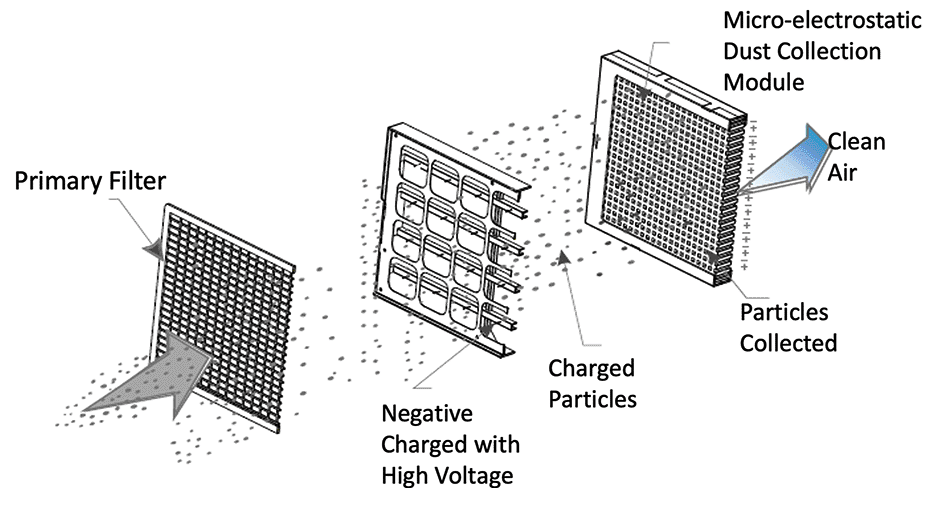
Air Sterilization Function
HEPA Is NOT Designed For Sterilization.
1. Viruses always adhere to airborne particles and droplets. The HEPA filter can capture some viruses by attracting particulate matter. However, we have not seen experimental data to prove the efficiency of HEPA to capture viruses.
2. The viruses captured by HEPA filter is active, so there are two risks as following:
-It perhaps blown out by the airstream to re-contaminate the indoor environment,
especially if the filter is overloaded.
-There is the risk of virus infection for the operator when replacing the filter.
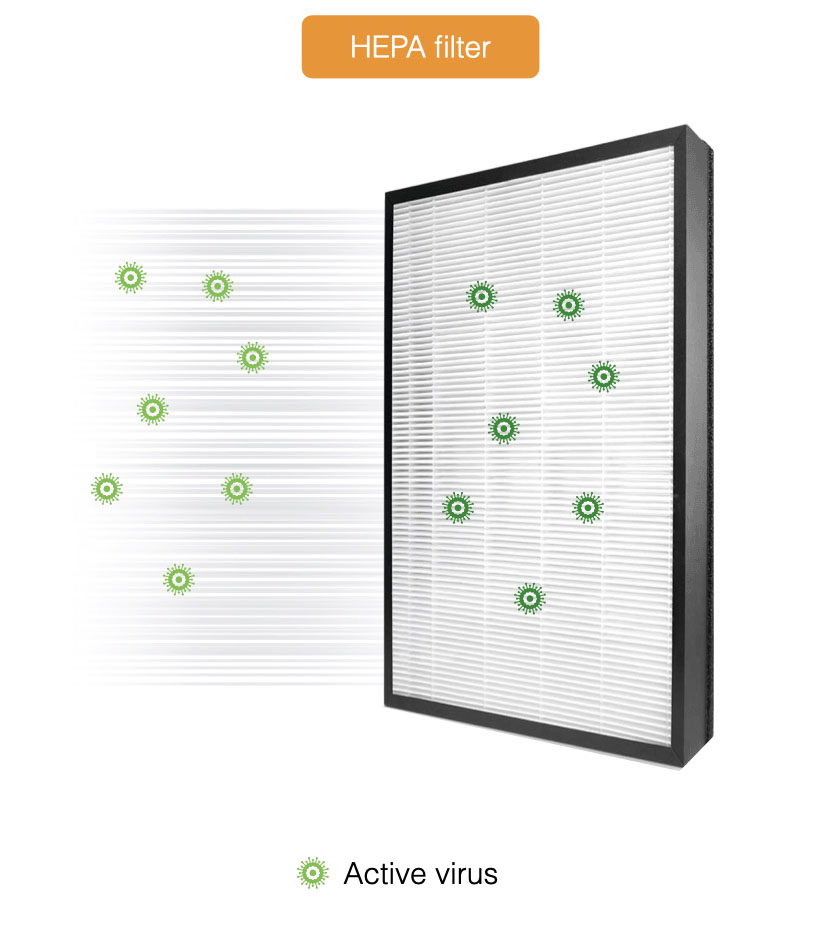
MESP Air Purifiers Are Perfect Air Sterilizers.
MESP system can capture fine particles as small as 0.01μm. It‘s highly effective at capturing and trapping microbes such as germs, bacteria, viruses, mold, etc. Meanwhile MESP system will definitely kill those harmful microorganisms with high voltage (over 10KV) strong electrostatic field. Safe and controllable!
An independent U.S. research laboratory conducted the research study by introducing the SARS-CoV-2 pathogen to an AQT air purifier built with MESP technology. The test result showed a significant reduction of pathogen at the downstream collection point and achieved a 99.99% SARS-CoV-2 sterilization rate. SARS-CoV-2 is the virus that causes COVID-19. A copy of the test report is available here.
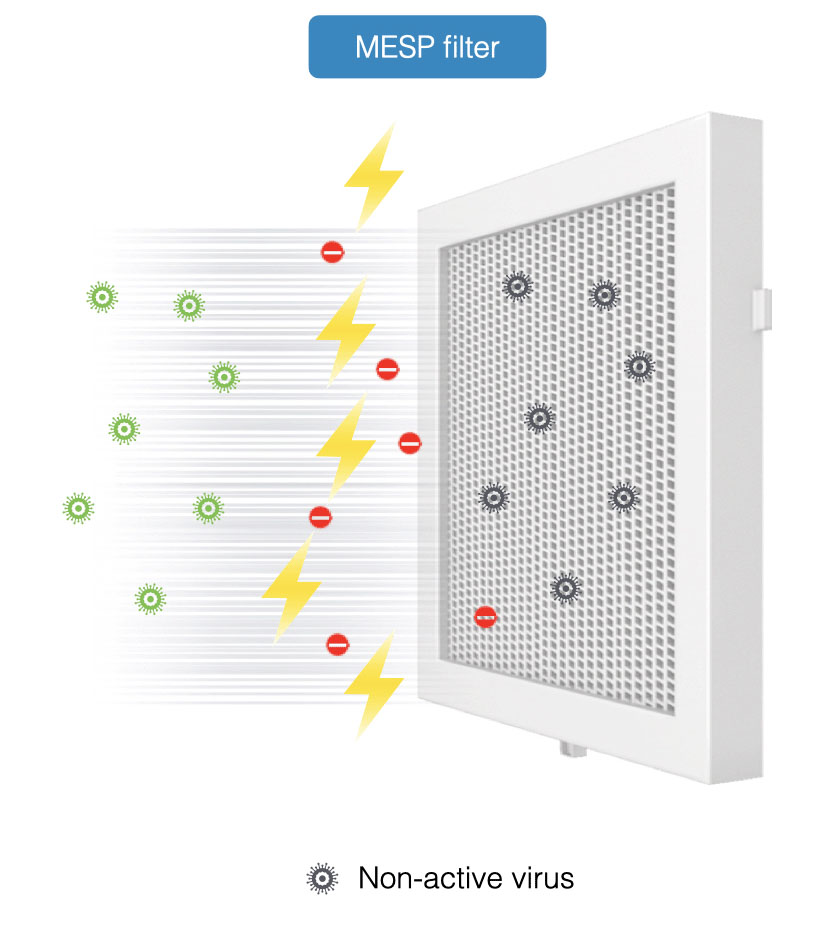
Technical Comparison
| HEPA | MESP | |
| Purification Efficiency | Excellent | Excellent + |
| 0.3 μm particle capture: 99.97% Smallest particle capture: no data |
0.3 μm particle capture: up to 99.99% Smallest particle capture: 0.01 μm |
|
| Air Sterilization | None | Excellent + |
| Just capture but not kill | Up to 99.99% | |
| Pressure Drop (resistance) |
Poor | >Excellent |
| 0.6 - 1.2” wg (150-350 pascals) | >0.04-0.2” wg (10-50 pascals) | |
| Energy Cost | Poor | Excellent |
| Significantly more energy due to high pressure drop | Air easily passes through the filters | |
| Maintenance Cost | Poor | Excellent |
| Final and/or pre-filters require frequent replacement/disposal. | Occasional cleaning takes only minutes. | |
| Service Life | Poor | Excellent |
| Loads quickly unless configured with substantial pre-purification. | Properly maintained MESP filter is permanent: Never needs replacing. | |
| Noise | Poor | Excellent |
| High pressure drop = high noise | Low pressure drop = quiet air flow | |
| Adapt to high humidity environment | Poor | Excellent |
| Noramlly not exceed 70% | Up to 95% | |
| Fire prevention | Poor | Good |
| Inflammable | Non-flammable |


